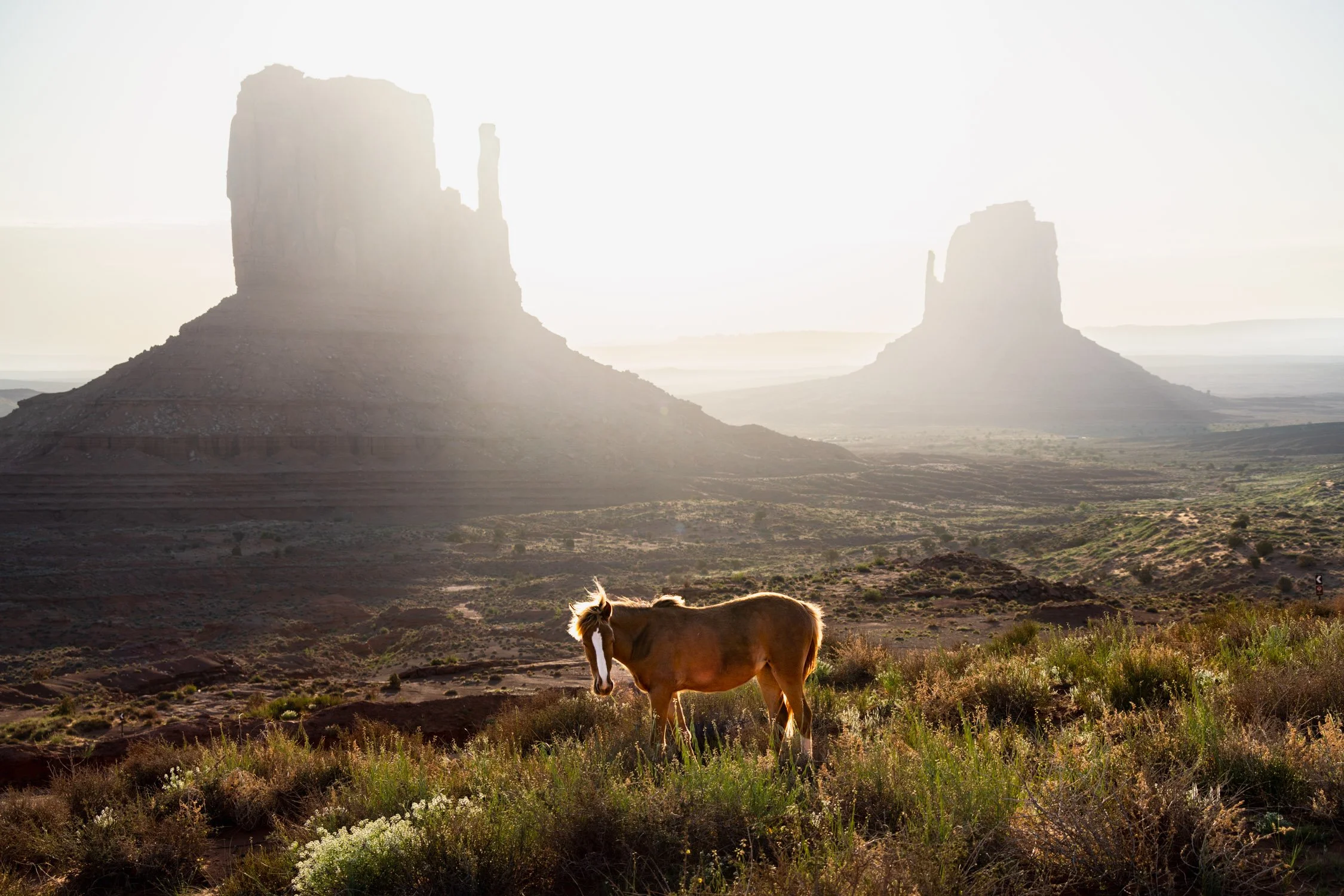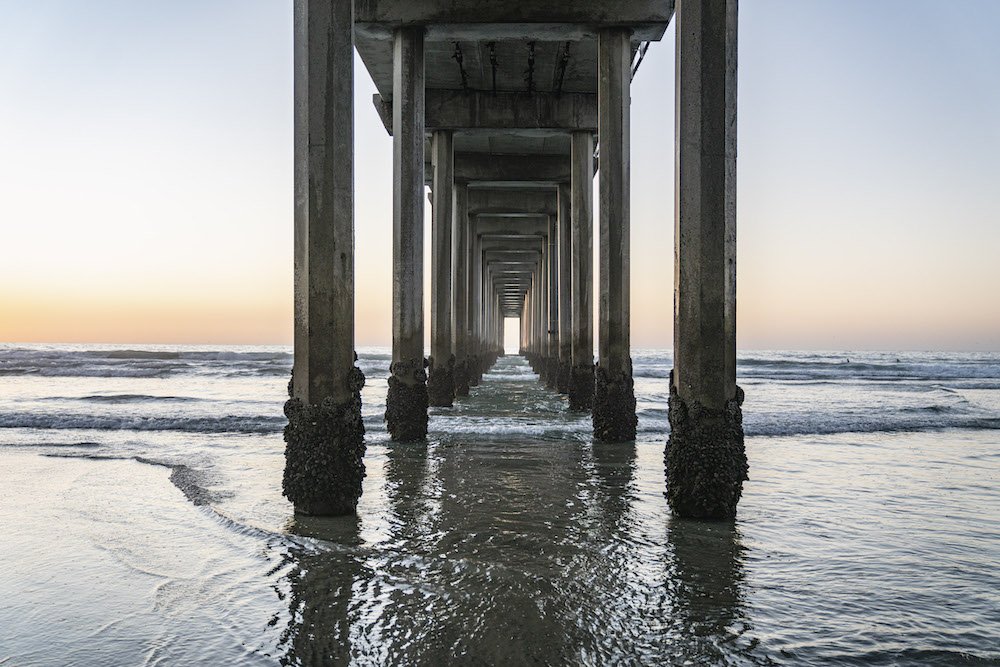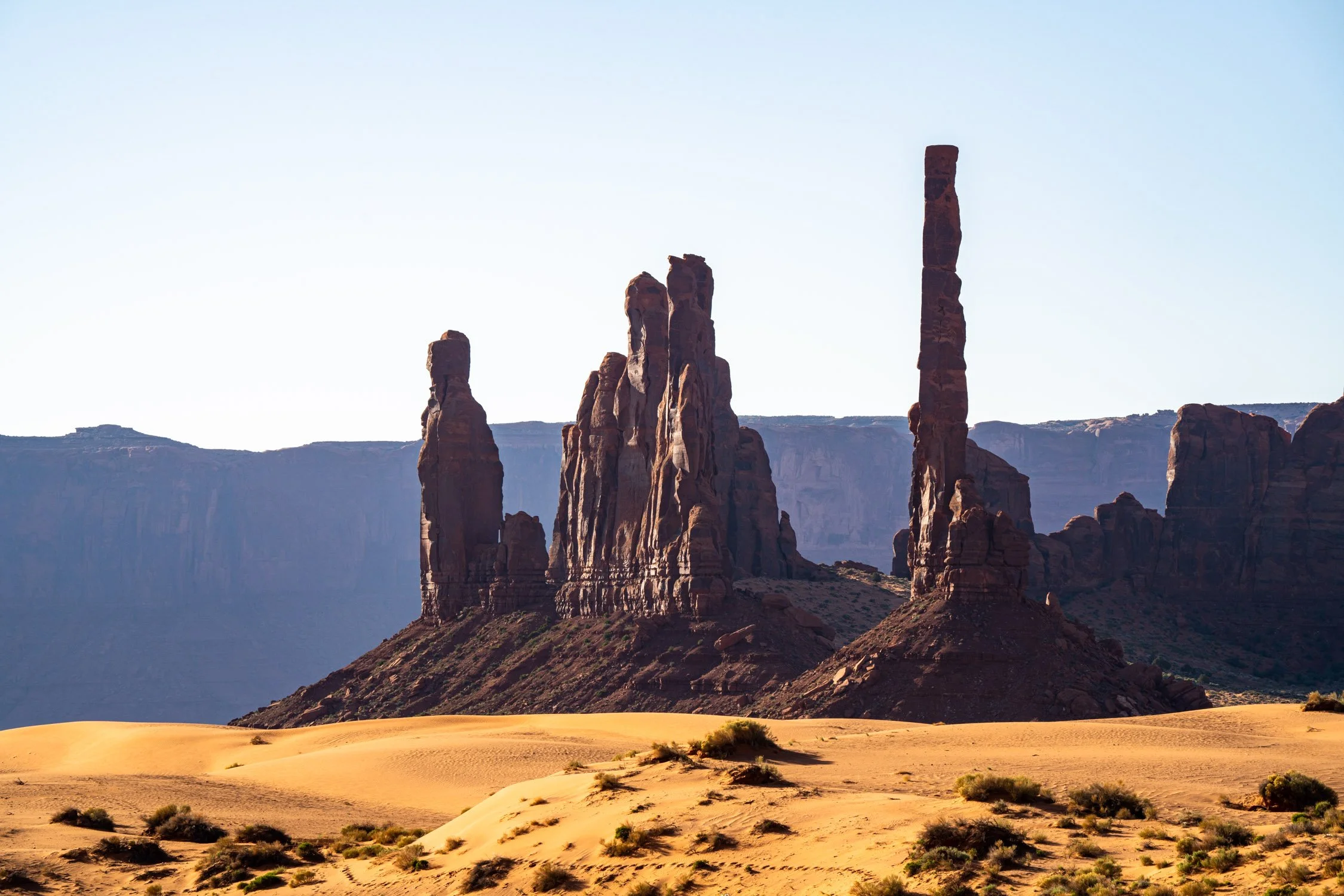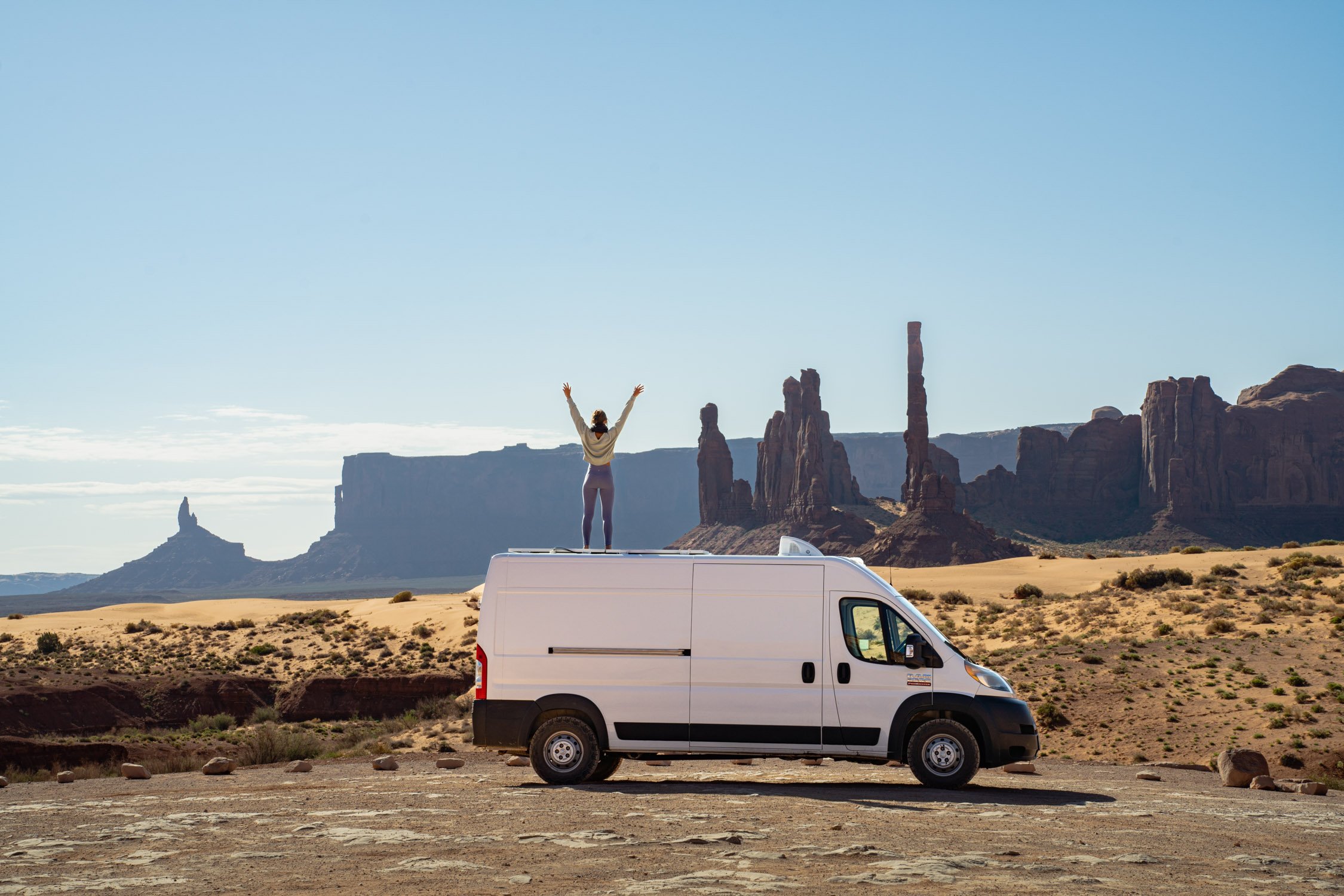Photography Guide For Monument Valley
Capturing the awe-inspiring beauty of Monument Valley through photography is a dream for many enthusiasts. Monument Valley, located on the Arizona-Utah border in the heart of the Navajo Nation, is renowned for its iconic sandstone buttes, mesas, and stunning desert landscapes. However, like any natural and cultural treasure, there are guidelines and considerations to keep in mind when photographing in this majestic location.
A field of wildflowers and a tower in Monument Valley during the spring sunrise. Photo by Dalton Johnson
Pros:
Iconic Landscapes: Monument Valley's iconic rock formations, vast desert landscapes, and dramatic skies provide photographers with a wealth of stunning subjects to capture.
Golden Hour Magic: The golden hours around sunrise and sunset in Monument Valley create magical lighting conditions that enhance the colors, textures, and contrasts of the rock formations.
Cultural Significance: The area's rich cultural heritage and connection to Native American traditions add depth and meaning to photographs, offering opportunities for storytelling and cultural appreciation.
Varied Perspectives: From panoramic vistas to intimate details, Monument Valley offers diverse perspectives for photographers, allowing them to experiment with composition and capture unique shots.
Seasonal Changes: The changing seasons in Monument Valley bring different colors, weather conditions, and moods to the landscape, providing photographers with opportunities for diverse and dynamic photographs throughout the year.
Photography Workshops: Many photography workshops and tours are available in Monument Valley, offering guided experiences, insider tips, and access to lesser-known spots for photography enthusiasts.
Cons:
Crowds: Popular viewpoints in Monument Valley can get crowded, especially during peak tourist seasons, making it challenging to find solitude and capture unobstructed shots.
Weather Challenges: The desert climate of Monument Valley can be extreme, with high temperatures during the day and cold nights. Weather conditions like strong winds or dust storms can also affect photography sessions.
Permit Requirements: Some areas of Monument Valley may require photography permits, particularly for commercial or professional photography, adding administrative hurdles and costs for photographers.
Limited Access: Certain viewpoints or areas may have restricted access or limited hours, impacting photographers' flexibility in capturing specific scenes or moments.
Lighting Constraints: While the golden hours offer stunning light for photography, midday sun can create harsh shadows and washed-out colors, requiring photographers to adapt their shooting schedule and techniques accordingly.
Cultural Sensitivities: Photographing in culturally significant areas of Monument Valley requires respect for Native American traditions, land use policies, and privacy considerations, requiring photographers to navigate these sensitivities with care.
Understanding Monument Valley's Photography Guidelines
Before diving into the specifics of photography in Monument Valley, it's crucial to understand and respect the rules and guidelines set by the Navajo Nation, who manage this sacred and culturally significant area. Here are some essential points to keep in mind:
Respect Cultural Sensitivities: Monument Valley holds immense cultural and spiritual significance for the Navajo people. As a visitor, it's essential to respect their land, customs, and traditions. Be mindful of any areas that are off-limits or restricted for photography.
Permits and Fees: In certain areas of Monument Valley, such as within the Tribal Park boundaries, photography permits may be required. These permits often come with fees that contribute to the preservation and maintenance of the park. Check with the Navajo Nation Parks and Recreation Department for the latest information on permits and fees.
Commercial Photography: If you plan to use your photographs for commercial purposes, including publications, advertisements, or any form of commercial gain, special permits and fees may apply. Ensure that you have the necessary permissions before engaging in commercial photography.
Respect Wildlife and Environment: As with any natural environment, it's crucial to respect the wildlife and ecosystem of Monument Valley. Avoid disturbing wildlife, stay on designated paths to prevent environmental damage, and leave no trace of your visit.
Best Practices for Monument Valley Photography
Now that we've covered the essential guidelines, let's delve into the practical aspects of capturing stunning photographs in Monument Valley:
Timing Is Everything: The play of light and shadow in Monument Valley transforms its landscapes throughout the day. Consider the golden hours around sunrise and sunset for capturing warm, soft light that enhances the textures and colors of the sandstone formations.
Composition Techniques: Experiment with different composition techniques to create compelling photographs. Use leading lines to draw the viewer's eye, incorporate foreground elements like desert vegetation or rocks for depth, and consider the rule of thirds for balanced compositions.
Use of Filters: Neutral density (ND) filters can be invaluable for controlling exposure, especially during bright daylight. Polarizing filters can enhance colors and reduce glare, making them useful for capturing vibrant skies and reducing reflections on rock surfaces.
Capture Diverse Perspectives: While the classic panoramic views are undeniably captivating, don't overlook the smaller details and intimate scenes that showcase the unique textures and patterns of Monument Valley's rock formations.
Respect Local Communities: If you encounter local residents or engage in cultural activities, seek permission before taking photographs. Respect privacy and cultural sensitivities at all times.
Tips for Responsible Photography
In addition to capturing stunning images, practicing responsible photography ensures that you leave a positive impact on Monument Valley and its communities:
Pack Out What You Pack In: Carry out all your trash and leave no trace of your visit. This includes not disturbing rocks, plants, or any natural elements.
Minimize Disturbance: Avoid excessive noise, especially in areas where wildlife may be present. Keep a respectful distance from wildlife and refrain from feeding or approaching them.
Educate Yourself: Learn about the history, culture, and significance of Monument Valley before your visit. Understanding the context enriches your photography and fosters greater appreciation for the land and its heritage.
Support Local Conservation Efforts: Consider donating to local conservation organizations or purchasing from local businesses to support sustainable tourism and conservation initiatives in Monument Valley.
Top Photography Spots in Monument Valley
The Mittens and Merrick Butte:
Description: The Mittens and Merrick Butte are perhaps the most recognizable features of Monument Valley. The Mittens are two towering sandstone buttes that resemble mittens, hence their name. Merrick Butte, located nearby, adds to the dramatic landscape with its imposing presence.
Best Time for Photography: These formations are especially stunning during sunrise and sunset when the warm light casts a golden glow on the red rocks, enhancing their textures and colors. The play of light and shadow creates captivating contrasts that photographers often seek.
Photography Tips: Consider capturing the Mittens and Merrick Butte from different angles and perspectives to showcase their grandeur and unique shapes. Experiment with wide-angle lenses to encompass the vastness of the landscape or zoom in to highlight intricate details.
John Ford's Point:
Description: Named after the renowned director John Ford, who filmed several iconic Westerns in Monument Valley, John Ford's Point offers a panoramic viewpoint that encapsulates the essence of the valley. From here, you can admire the expansive vistas, including the Mittens, Merrick Butte, and the sweeping desert landscape.
Best Time for Photography: Similar to other viewpoints in Monument Valley, John Ford's Point is magical during the golden hours of sunrise and sunset. The soft, warm light bathes the landscape, creating a cinematic atmosphere that echoes the Western films shot in this location.
Photography Tips: Utilize the wide vistas of John Ford's Point to capture the vastness of Monument Valley. Experiment with different focal lengths to emphasize distant formations or focus on foreground elements for added depth and visual interest.
Artist's Point:
Description: True to its name, Artist's Point offers breathtaking views that have inspired artists and photographers for generations. From this vantage point, you can marvel at the intricate layers of rock formations, the meandering valleys, and the ever-changing play of light and shadow.
Best Time for Photography: Sunrise and sunset are ideal for photographing Artist's Point, as the changing light transforms the colors and mood of the landscape. The soft, golden light accentuates the textures and contours of the rocks, creating a painterly effect.
Photography Tips: Experiment with composition at Artist's Point by incorporating foreground elements, such as desert plants or rock formations, to add depth and context to your photos. Consider using a tripod to capture long-exposure shots that emphasize the dynamic movement of clouds or the changing colors of the sky.
Sunrise at the Mittens in Monument Valley. Photo by Dalton Johnson
Photographing Monument Valley is a privilege that comes with responsibilities. By following guidelines, respecting cultural sensitivities, and practicing responsible photography, you can capture breathtaking images while contributing to the preservation of this natural and cultural treasure. Remember, the best photographs are not just visually stunning but also ethically sound, leaving a positive impact on both the landscape and the communities that call it home.










